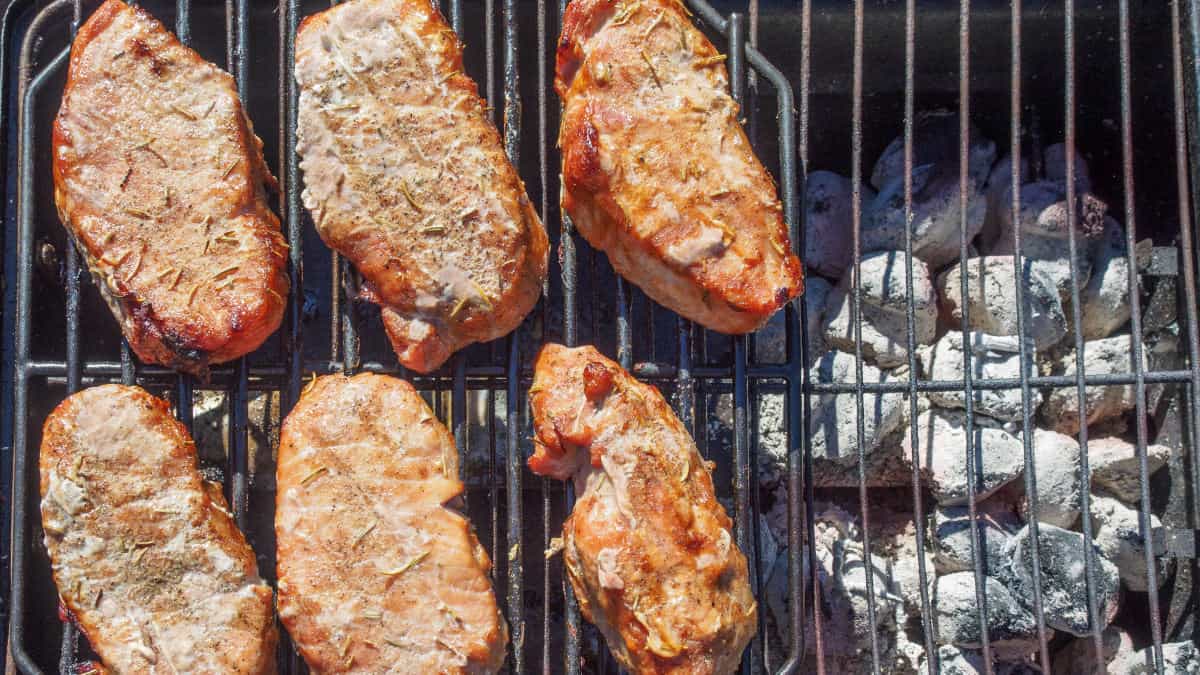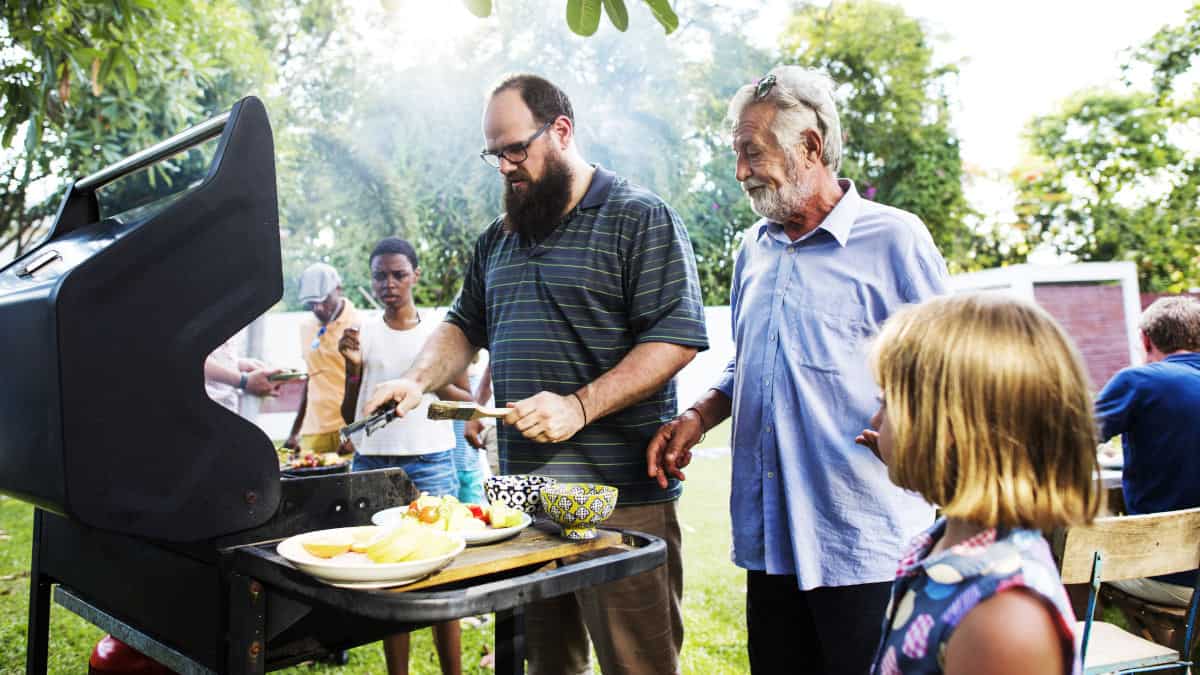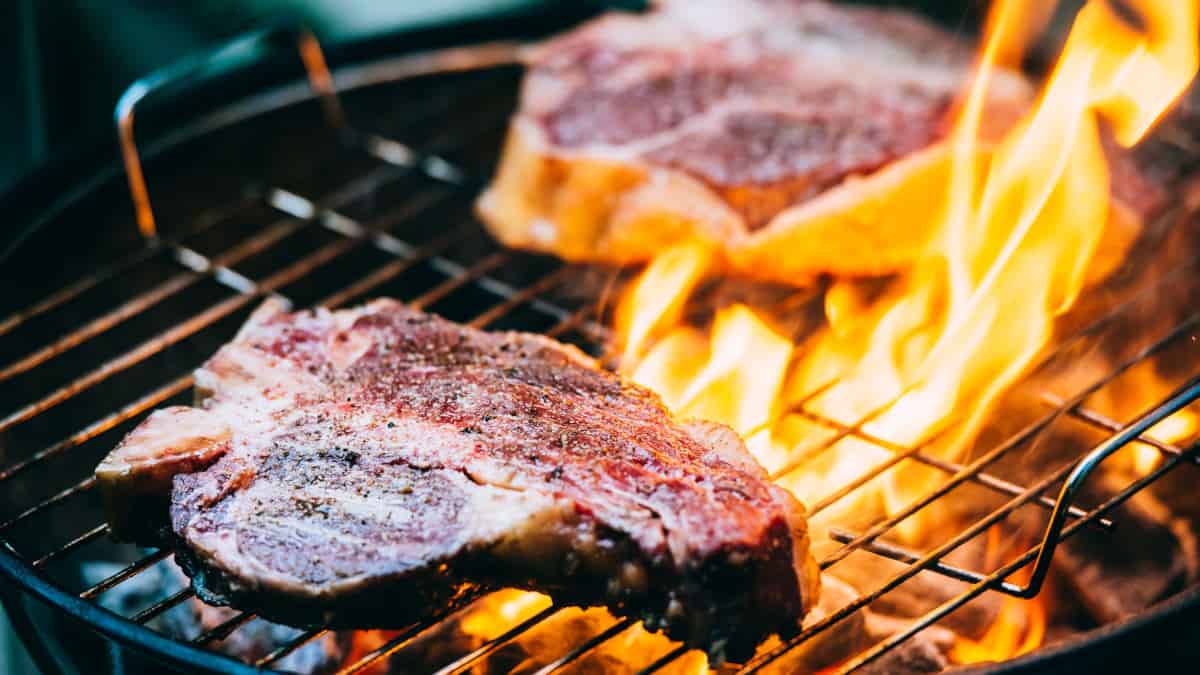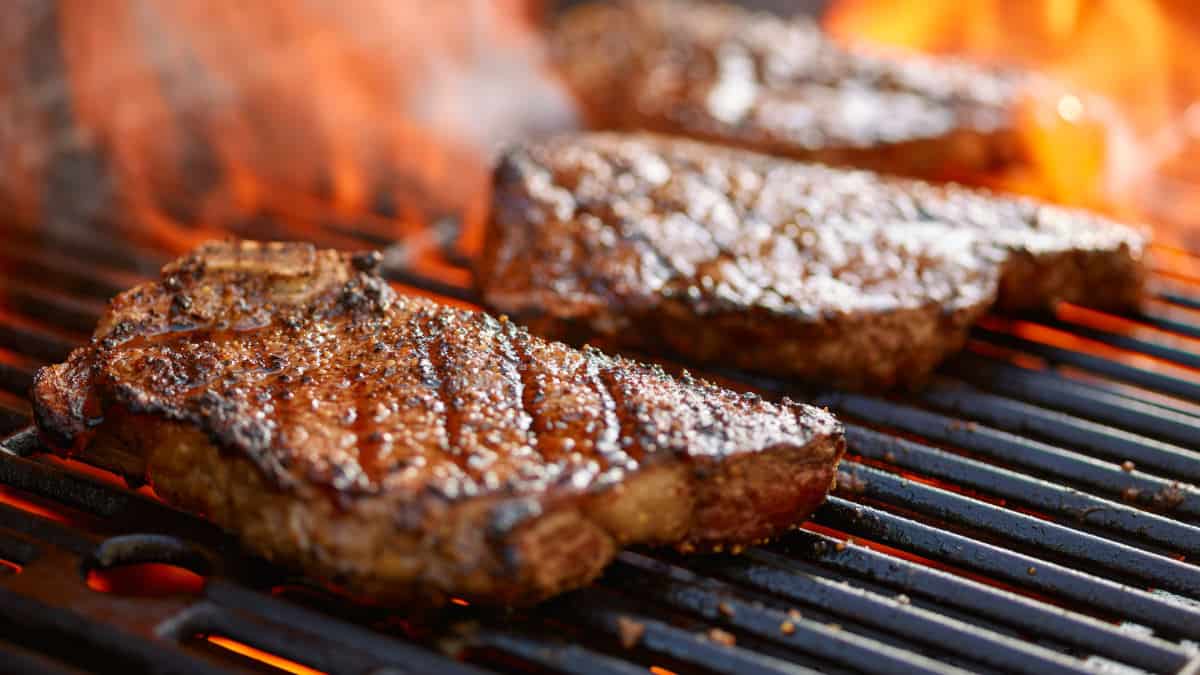Two zone grilling is one of the most effective grilling methods. It’s super simple to learn and is sure to become your new go-to way of setting up your grill.
In today’s article, we’re going share what two-zone grilling is, how it can benefit you and how you can set your grill up for this method.
Without further introduction, I think we should jump right in!
Defining Two-Zone Grilling
Two-zone grilling is possible to do in virtually any type of grill, including gas grills, charcoal, and electric (given there are two heating elements). In basics, two-zone grilling is where you split the grilling surface into two sections: one hot and one on a lower temperature.
You can do this by having one side of the grate over direct heat while leaving the other side with no direct heat underneath. This enables you to cook hot and fast on one side of the grill while slow-cooking other foods over indirect heat.
All in all, two-zone grilling gives you more options and control over how your food is cooked and how much food you can cook at once.
Difference Between Indirect and Direct Heat
Direct heat means that you have all burners blasting — or you lay out an even spread of charcoal — it’s fast, it’s hot, it’s directly over the heat source. Cooking over direct heat also means cooking with radiant heat by placing your food right above the charcoal or burners.
This type of cooking is best for chicken pieces, burgers, sausages, steaks or kabobs — basically foods that only require a few flips and short time on the grill.
Indirect heat is based on convection heat, similar to a traditional oven. The food is cooked on the grill but away from the heat source.
This type of grilling is best suited for larger, tougher cuts of meat that require a low and slow cook to tenderize.
Indirect heat will ensure that big cuts of meat are cooked to a safe internal temperature and a juicy, tender center. Imagine if you were to throw a brisket on a grill over direct heat — it would burn on the outside before the center would even be ready.
Advantages of Two Zone Grilling
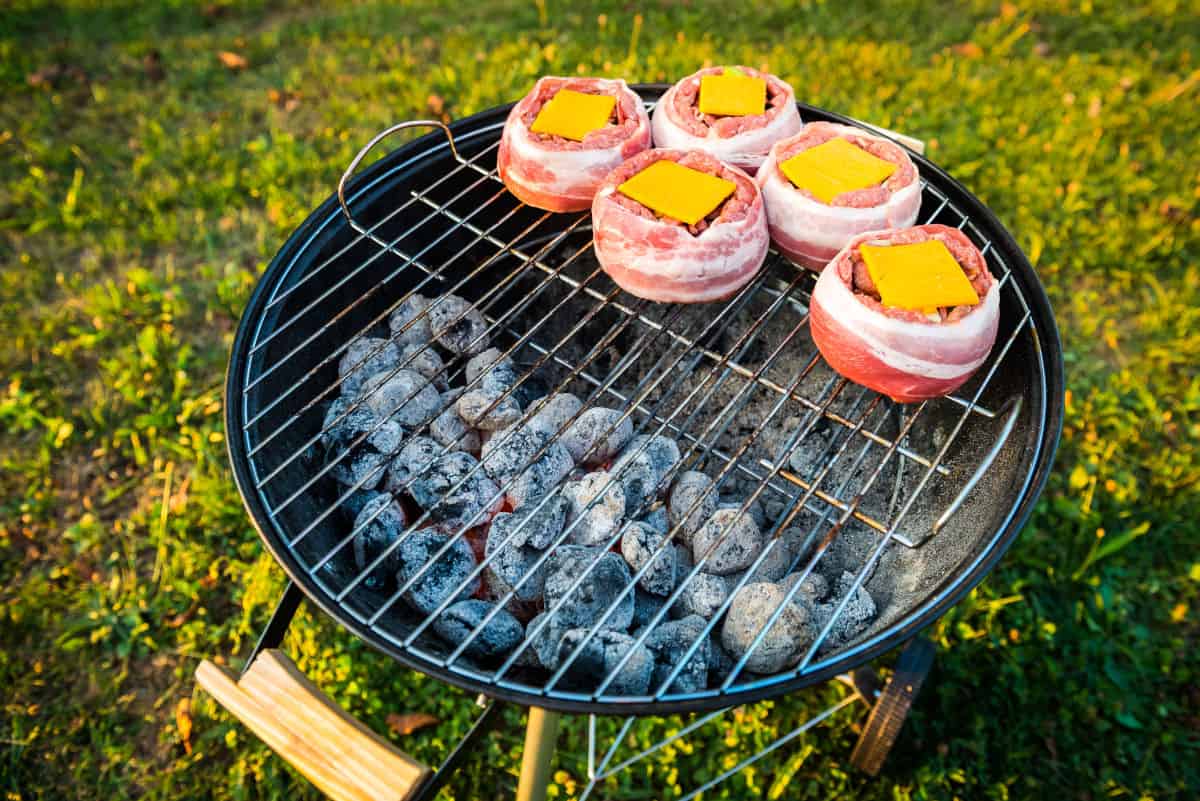
Flexibility
If you have people over for the Fourth of July, you’re sure to get a few doneness requests from your guests. Some like their burgers medium-rare while others prefer them well-done — hey, I’m not judging.
This is where two-zone grilling comes to the rescue! Cook medium-rare burgers (or steaks) over direct heat while cooking well-done burgers over indirect heat. It all sounds splendid, but how do you keep the medium-rare burgers warm while the others finish? Glad you asked — you can simply move the medium-rare burgers to the indirect zone to stay warm while finishing the rest.
Similarly, two-zone grilling also enables you to slow cook large cuts of meat over indirect heat while grilling veggies and smaller cuts of meat over direct heat.
How does prime rib, potato wedges, and asparagus sound? Delicious but a lot of work? Help yourself out and set up two grilling zones in your grill. Place the rib over indirect heat, close the lid, and cook until your desired doneness is achieved.
About 10 minutes before the prime rib is done, throw asparagus and potato wedges on the grill over direct heat and give them a quick cook. Once the rib is done, your veggies will be as well.
Control
Taming the flame is something new grillers often struggle with — and it usually results in charred meat. Luckily, you can regain control using two-zone grilling.
Two-zone grilling will enable you to quickly sear and brown the outside of a large cut of meat over direct heat and then move it to the indirect zone. This will give you that beautiful crust while helping the meat cook slowly until it reaches a safe internal temp.
Bonus! It works the other way around too. Maybe you’ve been slow-roasting a piece of meat, but you’re not happy with how the exterior is looking — move it over to the direct heating zone to crisp up.
Two-zone grilling also provides you with a “safety net.” Maybe the flame is suddenly flaring, and the temperature is getting a little out of hand, move it to the indirect zone until you regain control.
Last but not least, having that indirect zone is always handy when you need to keep food warm before serving.
Can Indirect Heat Still Form a Crust?
Who doesn’t like crispy, crunchy, caramelized meat? This is the reason why we grill!
It might seem like a result only achievable over direct heat, but you’ll be surprised to know that it’s easily done with less effort.
Set it and forget it — the indirect heat will slowly cook your food from the surface to the center. You don’t even need to turn it, just keep the lid closed.
Now, one of the benefits of grilling with two zones is that you always have the direct heat side to help brown and crisp up your food. If you aren’t entirely happy with how your meat is looking, transfer it to the direct heating zone to crisp up the outside. You should watch it carefully since it can burn quickly and even overcook.
It works the other way around as well. Sear a large cut over direct heat as you’re starting, then transfer it to indirect heat to cook through slowly. Both methods work excellently at achieving that crave-worthy seared crust.
Setting Your Grill for Two-Zone Grilling
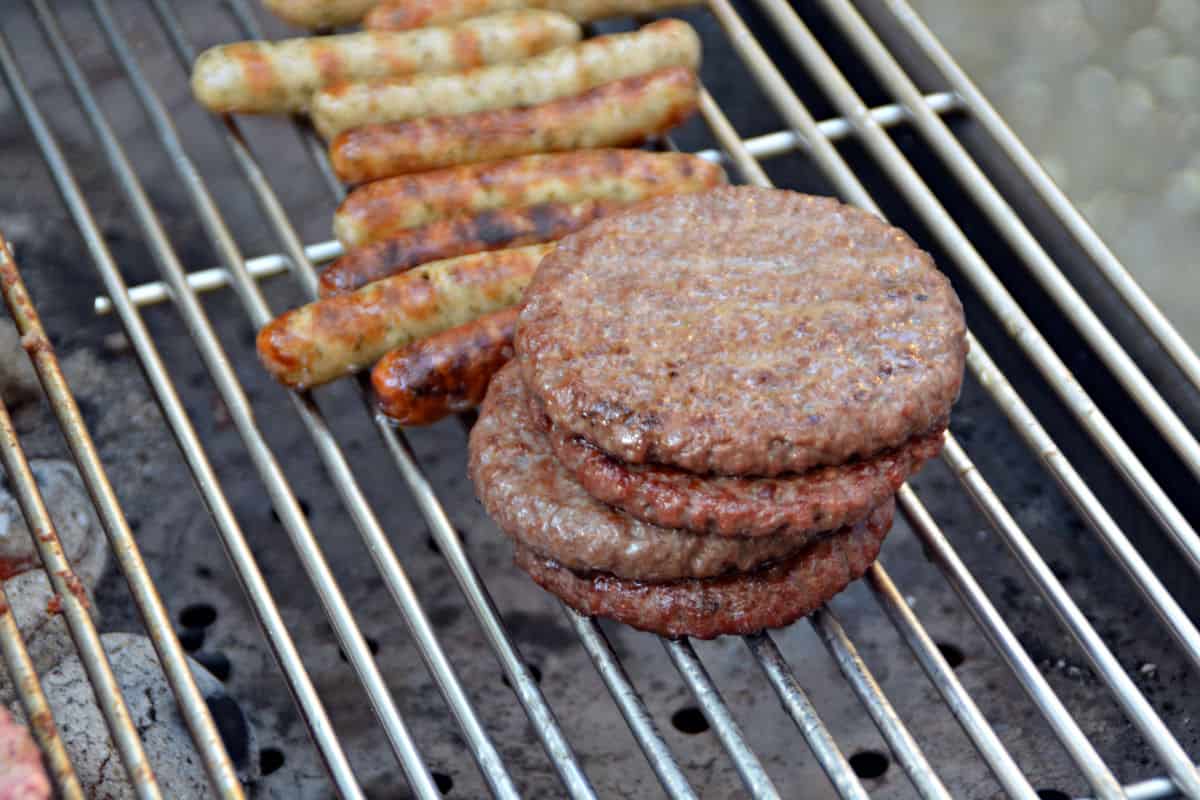
The beauty of two-zone grilling is that it’s possible on any type of grill. We’re going to show you exactly how it’s done with a thorough step-by-step guide:
Charcoal Grill
Step #1. Start the Coals
Use a charcoal chimney to get your charcoal started and white-hot.
Step #2. Set Up the Grill
Instead of laying the charcoal out in an even layer throughout the grill, tuck them towards one side instead. This will become your high-heat zone. The other end of the grill will remain without charcoal and will become the indirect zone.
Step #3. Set Up a Drip Pan
As your meat is cooking low n slow-style over the indirect heating zone, you don’t want all those juices and greases to waste, right? Place a foil pan underneath the meat in the indirect area to catch the drippings and save them for your gravy.
Tip: Always close the lid when cooking over indirect heat. This will help the grill to maintain the low temperature and give you a consistent cook.
Gas Grill
Step #1. Ignite the Burners
Start by turning half of the burners or elements on to high heat; this will be your direct heating zone. The other half should be set at a low temperature to create your indirect zone.
Tip: If you have more than two burners, decide whether you want one high and two low or vice versa. We recommend basing your decision on what you’re cooking and the temperature you need the most.
Step #2. Set the Right Temperature
We like to aim for 500 degrees Fahrenheit on the high side while leaving the low side at 225 degrees Fahrenheit. These temperatures go well for searing and slow cooking.
Step #3. Cook!
It’s time to toss on the food. Keep in mind that large items should go first — start by giving them a quick sear over direct heat and then moving to indirect heat to cook slowly.
Smaller, thinner items will cook quicker, so leave them towards the end of the cook — give them a quick sear over the high, direct heat.
Tip: Use the indirect heating zone to finish cooking large cuts of meat or keep veggies and small, thin meat warm.
Getting the Temperature Just Right
The steps we shared above are sure to get you on the right path toward two-zone grilling, but it’s essential to remember that every grill is different — and many things can get in the way of that perfect cook.
If you have a gas or electric grill, try to experiment with the burners to see how you can best achieve the ideal temperatures for direct and indirect heat. This is especially important if your grill has more than two burners/elements — you want to figure out how many burners should be on high to achieve the desired two-zone grilling.
The same goes for charcoal grills, try to establish how much of the firebox should be covered in charcoal to create the perfect balance between high and low heat. Remember, you’re going for 500 to 600 degrees Fahrenheit on the high end and 225 degrees Fahrenheit on the lower end.
You should also consider that the weather can interfere with how your grill is heating. Conditions like wind, rain, and even sun can mess with the temperature of your grill. We recommend that you check the temperature using a smoker thermometer and an instant read meat thermometer to check whether your meat is done.
How to Use a Water Pan in Your Grill
Adding a few wood chips to your grill as you’re cooking a large cut of meat over indirect heat will add a delicious smokey flavor. But, smoking and cooking over low heat for a long time can draw moisture out of the meat, especially if you’re cooking large joints or whole birds.
Adding a water pan in your grill will help bring back some of that essential moisture, it will also help to improve the smokey flavor as smokey gases bind with the moisture to infuse the meat.
A water pan will also help you control the low temperature better — as the heat rises with the closed lid, the water will absorb some of the heat, keeping the temp down.
Charcoal grill: Place a water pan in the grill’s empty side (the indirect heating zone) and a second pan over the hot coals. This will further help protect the meat against the heat — add a few wood chips over the burning charcoal, and you have yourself a smoker!
Gas grill: Place your meat on a rack directly above the water pan; this will capture the drippings that you can use for your sauce later on. Fill a small foil pan with wood chips and tuck it next to the burners underneath the grate. The chips will slowly smolder as they heat — close the lid and let your meat smoke.
Which Foods Should Grill Direct or Indirect?
Figuring out whether you should cook your meat over direct or indirect heat is relatively simple: just look at the size. Large cuts of meat are best cooked over low heat (indirect) for an extended period to help it break down connective tissues and tenderize it.
Grilling a large piece of meat over direct heat will only char the outside while leaving it undercooked on the inside. Even if it somehow managed to cook to a safe internal temperature, it will still be tough and inedible.
Meat with bones will also need indirect heat; this includes cuts like bone-in pork chops and chicken thighs. These cooked best starting with a quick sear over direct heat and then finished off over indirect heat to ensure they’re cooked through.
Smaller, thinner cuts of meat (think burger patties and steaks) will need quick, intense heat to preserve the soft, delicate texture. You should also cook veggies over direct heat; otherwise, they will likely turn to mush — not fun.
Two-Zone Fun
Once you’ve learned how to master and control your grill’s temperature, I promise you; you’re going to enjoy grilling much more. Setting up that two-zone grilling is as easy as it gets whether you have a charcoal, gas, or electric grill. Additionally, it will also make it a breeze to cook for a crowd, even if uncle Charles and aunt Betty have different doneness requests!
The best thing about two-zone grilling is that it doesn’t require any specific equipment or tools — heck, it doesn’t even require much time or effort!
Have you tried two-zone grilling before? Tell us about your experience!

